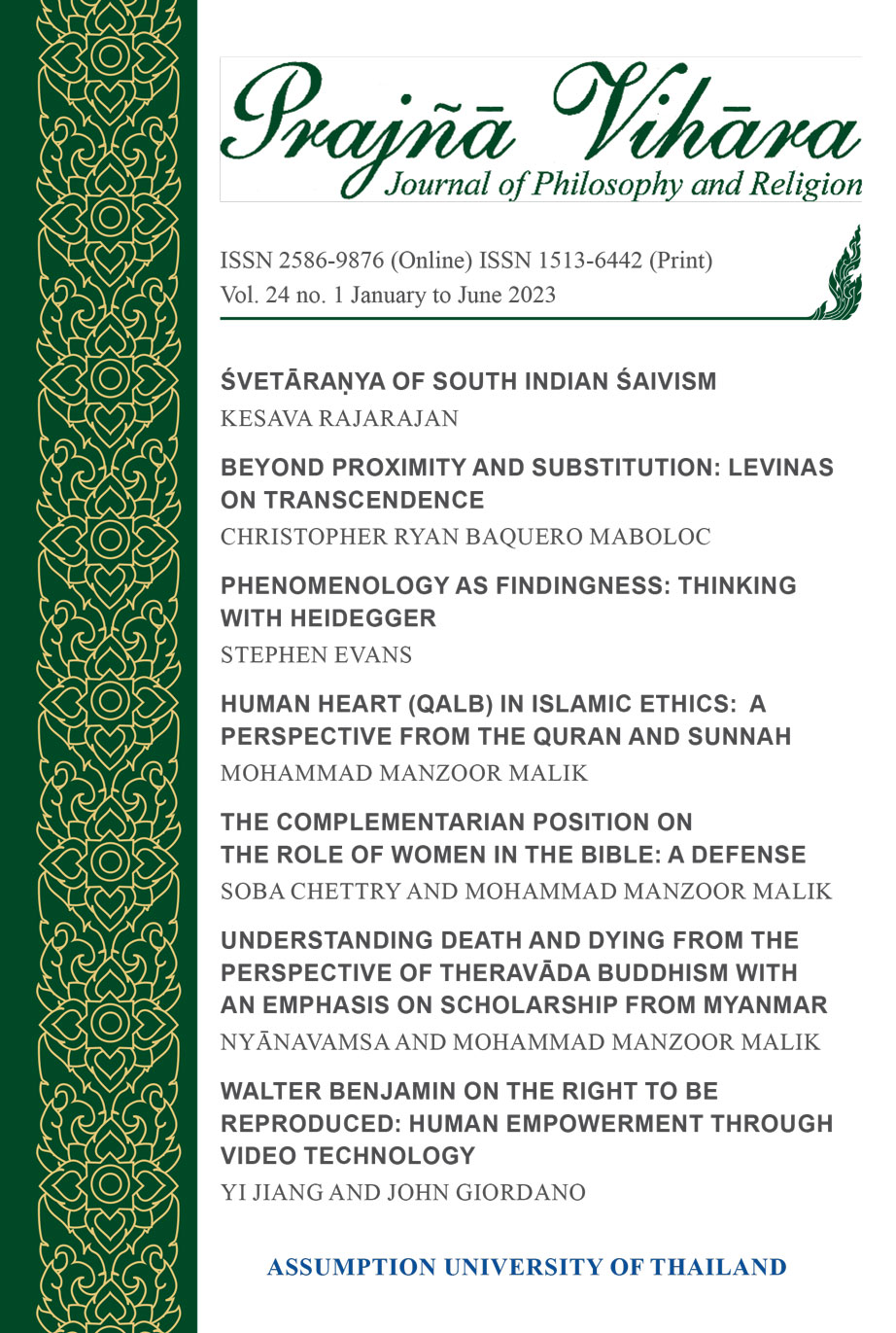UNDERSTANDING DEATH AND DYING FROM THE PERSPECTIVE OF THERAVĀDA BUDDHISM WITH AN EMPHASIS ON SCHOLARSHIP FROM MYANMAR
Abstract
This article is an investigation of ideas concerning death
and dying in in the context of Theravada Buddhism. It
draws especially from scholarship in Manaymar. Both
physical Death and the process of dying can be understoood
as products of impermenance. The Pali canon while
recognizing that death is beyond understanding in ordinary
language, understands death from the concept of continuity.
Myanmar scholars have understood the dying process in
Buddhism as involving mental processes and conciousness.
Death is a stage in the process which extends to the next
life. They therefore place an emphasis on the importance
of consciousness prior to death. The ultimate goal is
deathlessness or Nibbana which is achieved with the help
of meditation.
References
Bhikkhu Bodhi. A Comprehensive Manual of Abhidhamma. Kandy, Sri Lanka: Buddhist Publication Society, 1992.
Bhikkhu Bodhi. A Comprehensive Manual of Abhidhamma the Abhidhammattha Sańgaha (tra). Buddhist Publication Society: Kandy, Sri Lanka, 2007.
Chah, Ajahn, “The Teachings of Ajahn Chah,” (2004): 464, 338.
Damien K. A Dictionary of Buddhism. New York, Oxford University Press, 2003.
Gunaratna. V. F. Rebirth Explained. Buddhist Publication Society: Kandy, Sri Lanka, 2008.
Gunaratna, V. F. Buddhist reflections on death. Buddhist Publication Society, 1966.
Gunaratana, B. H. “Mindfulness in plain English.” Digital edition, 2011.
Ledi Sayadaw. The Manual of Buddhism. Yangon, Burma: Union of Buddha Sasana Council, 1965.
Mon, Mehm Tin. The Essence of Buddha Abhidhamma. Mya Mon Yadanar Publication, 1995.
Ñānamoli Bhikkhu. “The path of purification (Visuddhimagga).” Kandy: BPS, 1991.
Nanamoli, Bhikkhu, and Bhikkhu Bodhi. “The middle length discourses of the Buddha: A Translation of the Majjhima Nikaya.” Wisdom Publication, Somerville, MA, 1995.
Nandamālābhivaṃsa. Kamma at Death and Rebirth. Full Colour: Mandalay, Myanmar, 2016.
Nyanatiloka Mahathera. Buddhist dictionary. Kandy, Sri Lanka: Buddhist Publication Society, 1998.
Ñänamoli Bhikkhu. Visuddhimagga: The Path of Purification (Trans.). Buddhist Publication Society, 1991.
Sayadaw, Pa-Auk Tawya. “The Only Way for the realization of Nibbāna.” PAMC: Singapore, 07/2014.
Sayadaw, Pa-Auk Tawya. The workings of Kamma. Pa-Auk Meditation Centre, 2007.
Sumegi, A. Understanding death: An introduction to ideas of self and the afterlife in world religions. John Wiley & Sons, 2014.
Sayadaw M. Manual of insight (tra). Simon and Schuster, Vipassanā Mettā Foundation, 2016.
Sumedho, A., & St Ruth. “Do not Take Your Life Personally.” Buddhist Publication Group: Totnes, UK, 2010.
Thera, Nyanatiloka. Buddhist dictionary: Manual of Buddhist terms and doctrines. Kandy, Sri Lanka: Buddhist Publication Society, Fourth Revised, 1998.
Thera Mahamoggalla. Abhidhanppadipika (Trans.). Burmese scrip. State Pariyatti Sasana: University Yangon, 2013.
Thera, P. The Buddha’s Ancient Path. Pariyatti Publishing, 2017.
U Jotika & U Dhamminda. Mahãsatipathãna Sutta: The Greater Discourse on Steadfast Mindfulness (Trans.). Buddha Dharnma Education Association Inc, 1986.
Upatissa, Arahant. Path of Freedom. Translated by N. R. M Ehara, Soma Thera, and Kheminda Thera. Buddhist Publication Society, 1995.
Walshe. Maurice. The Long Discourses of the Buddha (Dīghanikāya) (Tr). Kandy: B.P.S, 1987.
Downloads
Published
Issue
Section
License
Consent to Publish and Transfer of Copyright
By publishing in Prajñā Vihāra, the author agrees to transfer and assign to Assumption University of Thailand as the Publisher of the Journal, the copyright to the Article in any form, including any and all rights, interests and claims related to it.
The author does retain the following rights:
- The right to make further copies of the published article for their use in classroom teaching.
- The right to reuse all or part of the published article in a compilation of his or her own works or in textbooks of which they are the author or coauthor.
- The right to make copies of the published article for internal distribution within their academic institution.
- All proprietary rights other than copyright, such as patent rights.
- The Article is his or her original work, and has not been published previously and is not under consideration for publication elsewhere.
- It does not contain any matter that is obscene, libelous, or contrary to law.
- They have obtained the necessary license or written authority and paid any and all related fees for the use and reproduction of text, tables, illustrations and other copyrighted work from the owners of the intellectual property rights, and can furnish the Publisher copies of the license/written authority and proof of payment of related fees upon the signing of this Agreement.
- They have the consent of the Co-Authors of the article upon the signing of this Agreement.
- In the event that they intend to republish, reprint or translate all or part of the Article in other publications, they will secure the prior written permission from the journal Editor.
Prajñā Vihāra adopts the Creative Commons Attribution (CC BY-NC-ND) license





